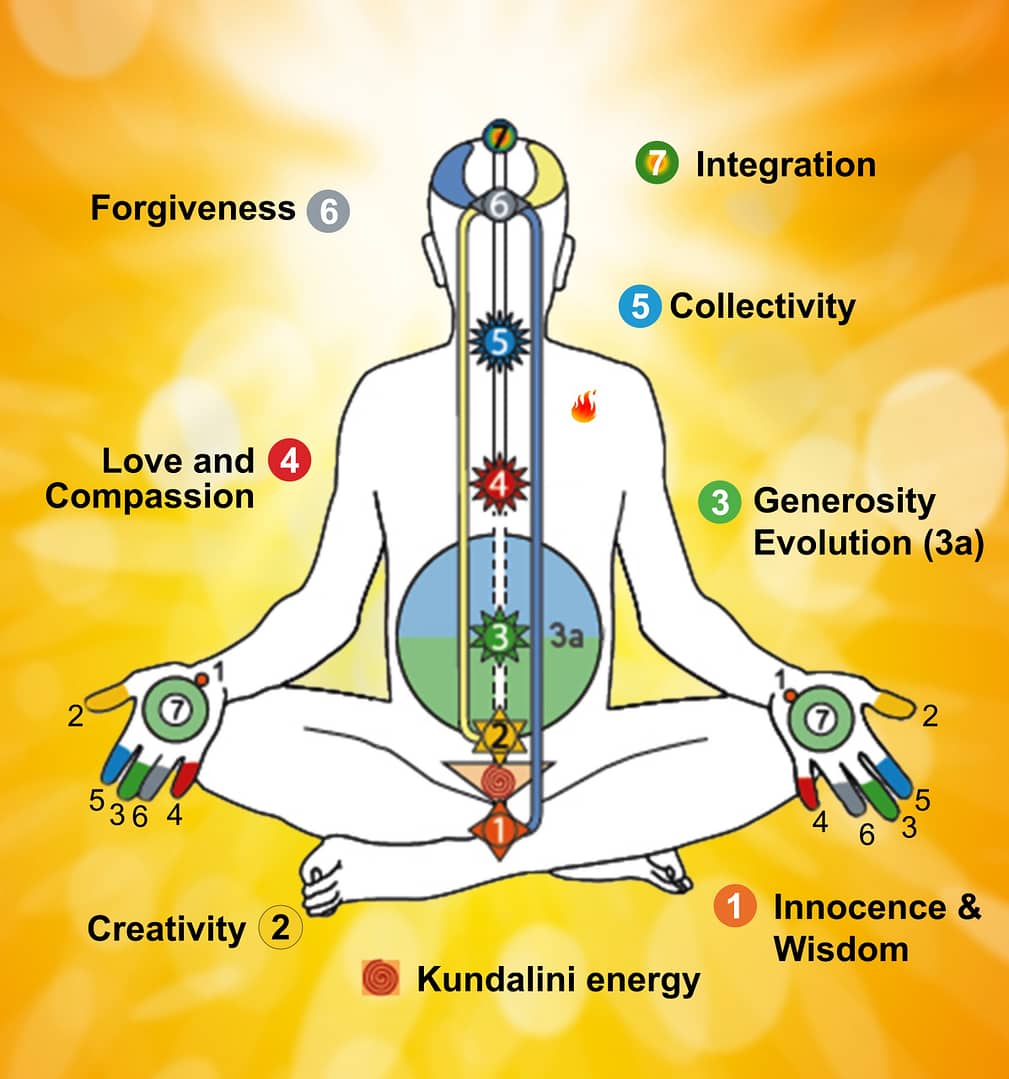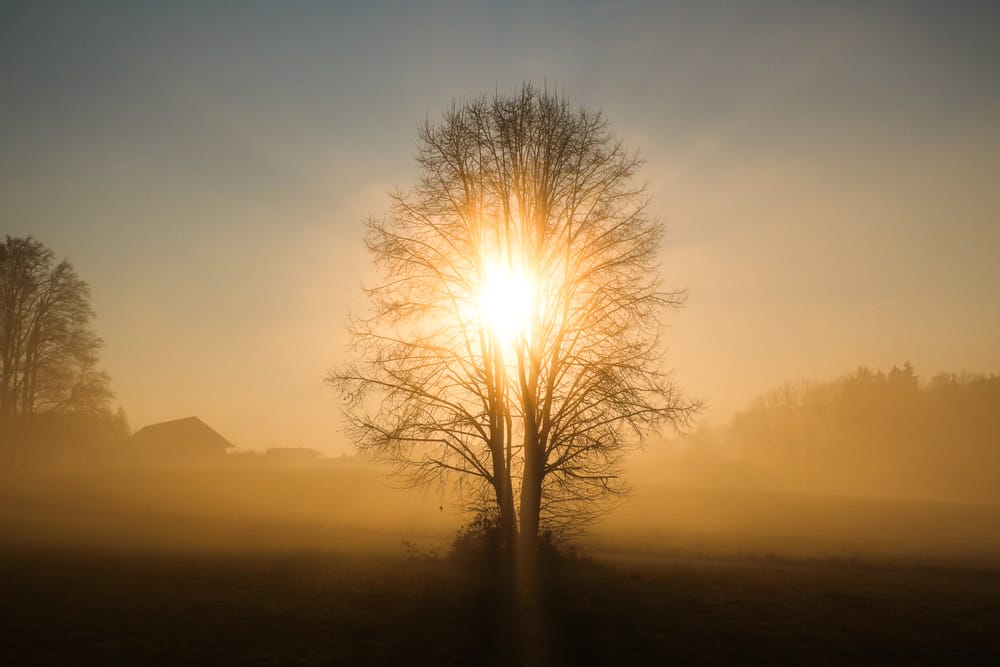Character and Personality
The 4 Primary Realms of Consciousness
The 4 Primary Realms of Consciousness
Sahaja philosophy, as explained by the teachings of Shri Mataji, plus the cumulative years of research and experience by practitioners over the past four decades, has helped us to understand and identify four distinct realms of consciousness.
First, let’s discuss consciousness from the perspective of spirituality. Our state of consciousness is governed and identified by our attention. Our attention is a living canvas, ever-shifting, ever-evolving. It is acted upon by the forces of the three Gunas or tendencies within us. These three tendencies trigger thoughts that drag our attention to the past, present or future. At every moment in our consciousness, memories are created and stored in our brains, depending on what our attention shifts to. This constant dragging of our attention creates our temperament, which is largely influenced by our Gunas.
Thus, our state of consciousness is defined by the power of our attention and its constant movement. Depending on where our attention is directed, our consciousness traverses accordingly into a specific spiritual realm of consciousness.
According to Sahaja philosophy, the spirit or soul resides in our heart, and along with the Kundalini energy, channels, and chakras comprises our subtle energy system — that is, our existence in the causal or subtler plane. Every cell in our body has a reflector of the soul within it and that’s how our entire bodies are controlled by the master or main soul residing in our heart. Each cell also includes within it a miniature or microcosm replica of the overall subtle system — the Kundalini energy, channels and chakras. This is why our entire physical, mental and emotional functioning is ultimately controlled by our subtle energy system. Not to confuse you, but it might interest you to know that the macrocosm — the larger energy system of (Kundalini energy, channels and chakras) within each of us — is actually a replica of the even bigger macrocosm, the universal subtle energy system.
The movements of our attention and consciousness causes our subtle being or subtler existence to move and traverse into various realms of consciousness. This, in turn, is driven by our behavior and reactions.
For instance, when we are excessively emotional, our attention, consciousness, subtle system and consequently, we, as spiritual beings, are pushed into a realm of consciousness on the left side of what we might equate to the spiritual ecosystem within us. This specific realm is known as our individual subconscious.
What Realms of Consciousness Are
The realms of consciousness may be thought of regions or strata in the subtler or spiritual plane of our existence.
Our Spirit, chakras (energy centers), nadis (energy channels) and the Kundalini energy are all present and represented on this spiritual plane of existence. Just as our hands and feet or tables and chairs around us all exist in the physical plane of existence with shapes, sizes and relative position to each other, the realms of consciousness and all the elements of the subtle energy systems of individual human beings, as well as the universal, collective subtle energy system, is also part of the spiritual or subtler plane.
There are four primary realms of consciousness accessible to human beings: subconscious, supraconscious, super consciousness, hell.
The subconscious realm is present on the left side; the supraconscious realm on the right side. These represent the past and future respectively. Every moment of the present that we experience passes and goes into our past or subsconscious area. Likewise, our future is represented and stored within our right, supraconscious area.
The realm above is known as super consciousness, which is the state our attention rises to during thoughtless awareness. In other words, the rising of our Kundalini energy stretches the canvas of our attention to this higher state of super consciousness where we are also connected to the divine power. The realm of super consciousness corresponds to the collective unconscious.
Down below all the chakras is what is referred to as the realm of hell, which is essentially the hell we’ve all always known of and feel we have some understanding of. (It’s not just a coincidence that we make statements like “rising up to the heavens” or “falling down to hell,” even if we weren’t fully cognizant of this spiritual structure within us.)
There are additional realms that you could think of as sub-realms: the collective subconscious and collective supraconscious, which lie beyond the individual subconscious and supraconscious respectively. When our attention drags our consciousness into the past, our minds shift into our subconscious. Further and deeper movement into the past can cause us to move into the collective subconscious area. Our individual subconscious is also represented by our left energy channel, or the power of our emotions. Thus, becoming emotionally overreactive and dwelling to much in the past can cause us to move into our subconscious and in extreme situations, the collective subconscious.
In the same fashion, the right side energy channel represents our supraconscious and gives us our physical and mental energies and powers. Excessive futuristic thinking, sustained aggressive or violent behavior can cause us to move into our supraconscious area and then into the collective supraconscious. Another example might be sustained futuristic focus by people who predict futures (e.g., psychics). Those who can accurately predict the future in fact draw from the supraconscious realm, using special powers to be able to predict your future. Or they may be able to tap into the subconscious to read your past. More dangerous are spiritualists who play around with spirits in the collective subconscious or collective supraconscious.
Another classic example in the history of mankind is Adolph Hitler. From Tibetan Lamas, he learned how to draw from the supraconscious realm of human beings and cause people to be extremely ego-oriented and aggressive, and push them so far into their supraconscious that killing innocent Jews (even children) in gas chambers began to seem normal and acceptable to them. Such was the cruelty and aggression that these so-called “war criminals” exhibited once they were pushed too far into the right side or the supraconscious realm.
Other examples of extreme shifts into realms of consciousness include spiritualists and gurus who may have had good intentions of influencing the Kundalini energy, but didn’t have the knowledge or skills to take the Kundalini energy all the way up the central channel. What they ended up doing, instead, was taking it only to the 6th chakra and applying so much force to push it up to the 7th chakra that the Kundalini veered into the subconscious or supraconscious regions rather than the superconscious. The result was that these unfortunate practitioners ended up becoming mental wrecks.
Problems Associated with Uncontrolled Attention
Now that you’re aware of the realms of consciousness we can traverse and understand how human consciousness is represented and influenced by our attention, let’s discuss how random-focused, uncontrolled attention can cause problems for us in the spiritual plane.
The optimal state is to live in the present with our attention balanced so that it neither goes too far to the left or the right but remains in the center channel, the path of our spiritual ascent.
However, as we grow into more complicated human beings over time and accumulate the ego and superego within us, we may lose our balance due to external circumstances and by virtue of our own acts. Perhaps our attention starts shifting randomly to things that please us and in an uncontrolled manner. Perhaps we’re not aware when extreme attention shifts cause us to cross limits of the realms of consciousness. At that point, our tendencies (gunas) become imbalanced and one feeds the other to create a vicious cycle of imbalanced attention and undesirable negative traits within us.
At any given time, unless there is a conscious effort to control our attention, stay in the present and avoid attitude and behavior extremes, we can easily veer too far to the left or right side, or slip into extremes such as the collective subconscious or supra conscious. We may do it unintentionally, unaware that we’re veering into dangerous territory. An extreme shift into the collective subconscious can even cause us to inherit possessions within us and cause us to manifest weird behavior, as though someone else is controlling our behavior.
The Super Conscious – Where Sahaja Meditation takes us
Ultimately, the path of spirituality and the pinnacle of spiritual achievement in our lives causes us to strive for the Super Conscious, also known as the Collective Unconscious (as explained by Carl Jung). This realm is also known as Collective Consciousness, the place where we all strive to be, during our group or collective meditation sessions in Sahaja.
Our subtler beings enter this realm once the Kundalini energy rises and elevates our consciousness – like a tent pole stretching out the top of the tent, the Kundalini energy causes our attention or consciousness to stretch and touch or be in the realm of Collective Consciousness.
That also coincides with the experience of Thoughtless Awareness. In fact, the rising of the Kundalini energy and achieving a union with the all-pervading power, the elevation of our consciousness and the achievement of Thoughtless Awareness are simultaneous occurrences, all within a fraction of a second.
It’s also true that it may be hard initially, to reach that realm of Collective Consciousness and keep our attention steady at that place. This is also the reason why our meditation experience, in the initial stages, is often a mix of intermittent thoughts and bouts of Thoughtless Awareness. Through regular practice however, we learn how to stay in that higher realm of Collective Consciousness for longer durations and in a state of extended Thoughtless Awareness.
It’s true that in ancient times, saints with yogic powers knew how to stay in this higher realm for days, weeks or even months. That’s how they could experience heaven while being on earth – they were in heaven. In some ways, the Collective Unconscious is also referred to the Heaven on Earth, in the truest sense of the phrase.
A sustained presence in the Collective Consciousness is also a sign and verifiable proof of having achieved Enlightenment. The practice of Sahaja thus gives us a good opportunity for this achievement in our lifetimes. The caveats are a strong desire for the higher states of spirituality, patience, perseverance and hard work in making our meditation routine work for us.





